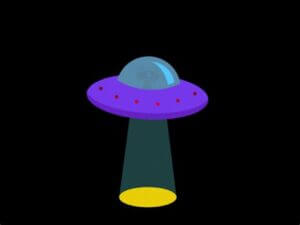Despite the impression one gets from schoolbooks, our current knowledge of the universe represents a small island in a vast ocean of ignorance. The scientific enterprise is all about expanding the landmass of this island. And it is fun to engage in the activity of gaining knowledge; knowing everything in advance would have been much more boring. Still, it would be shocking to learn all at once of the discoveries of an Extraterrestrial civilization that have been doing scientific and technological exploration for billions of years, in contrast to our mere few centuries. The famous science fiction writer Arthur C. Clarke summarized this idea in the third of his three laws : “Any sufficiently advanced technology is indistinguishable from magic.” ( The other 2 laws:
- When a distinguished but elderly scientist states that something is possible, he is almost certainly right. When he states that something is impossible, he is very probably wrong.
- The only way of discovering the limits of the possible is to venture a little way past them into the impossible.)
Meeting a piece of advanced technological equipment developed by an Extraterrestrial intelligence might resemble an imaginary encounter of ancient Neanderthal cave people with a modern cell phone. At first, they would interpret it as a shiny rock, not recognizing it as a communication device. The same thing might have happened in reaction to the first detection of an interstellar visitor to the solar system, ‘Oumuamua, which showed six peculiar properties but was nevertheless interpreted as a rock by mainstream astronomers. Why Astronomers don’t get on board with Extraterrestrials is beyond imaginable to me.
Because it would likely be relatively small, most advanced equipment could only be recognized in the darkness of space when it comes close enough to our nearest lamppost, the sun. We can search for technological “keys” under this lamppost, but most of them will stay unnoticed if they pass far away. More fundamentally, one may wonder whether we are able to recognize technologies that were not already developed by us. After all, these technologies might feature subtle purposes, like the cell phone communication signals that a ancient Neanderthal cave person would miss.
Is there something we might be missing that is already here and now? When looking around us, the most mysterious phenomenon we encounter routinely is the sophistication of complex life. Some scientists wondered whether life itself was seeded on Earth by an Extraterrestrial civilization in a process called “directed panspermia.” One can imagine a probe that brought the seeds of life in the form of microbes or instead a 3-D printer that produced these seeds out of the raw materials on Earth based on a prescribed blueprint. The universal left-handedness (chirality) of all life-forms on Earth without exception can be interpreted as stemming from a single panspermia event, be it natural (through a rock arriving from space) or artificial in origin . Even in this context, our imagination of what Extraterrestrials might do will improve once we are able to produce synthetic life in the laboratory.
The number of targeted probes that are needed to seed life artificially in the habitable zone of a planetary systems is far smaller than the number of natural rocks that serve the same purpose on random trajectories. The advantage of 3-D printing of life from raw materials on a target planet is that natural DNA samples live a finite lifetime and may eventually disintegrate in a few million years, whereas artificial machinery can be constructed to last much longer.
At this time, our civilization is highly vulnerable to annihilation by self-inflicted wounds, such as nuclear wars or climate change, as well as external threats such as asteroid impacts or evolution of the sun. As much as the Earth appears to be a comfortable home for us right now, it would be prudent not to keep all our eggs in one basket. We should venture into space and seed objects beyond the Earth with life as we know it, thus reducing the risk of complete destruction and securing the longevity of things we care about.
If we ever find evidence for life on other objects and it all looks the same, or if Extraterrestrial life would appear to be unusually clustered in space, we might realize that it has a common ancestry and panspermia is at play. The situation would be just like recognizing that too many kids in the neighborhood resemble the mailman.
If life was seeded artificially on Earth, one may wonder whether the seeders are checking on the outcome. And if so, the fact that we have not heard from them may indicate that they are disappointed. The experiment may have failed, or we are simply too slow to mature. Well, this may not come as a surprise given the irresponsible way we behave sometimes. Perhaps if we only knew that someone is looking over our shoulders, we would do better. It is not too late for us to find out, by using the best telescopes at our disposal.
We are the change the world has been waiting for!
Have you witnessed an unidentified flying object?
Whether you think UFOs are black projects, extraterrestrial craft, something else altogether, or just don’t know.
Unconditional love. The road we all get to walk. Unconditional love is like the sun.
WE ARE THE DISCLOSURE ~ WE HAVE NEVER BEEN ALONE
Love and Regards,
Thank You,
Nancy Thames
Sources: Credit: Nick Higgins


